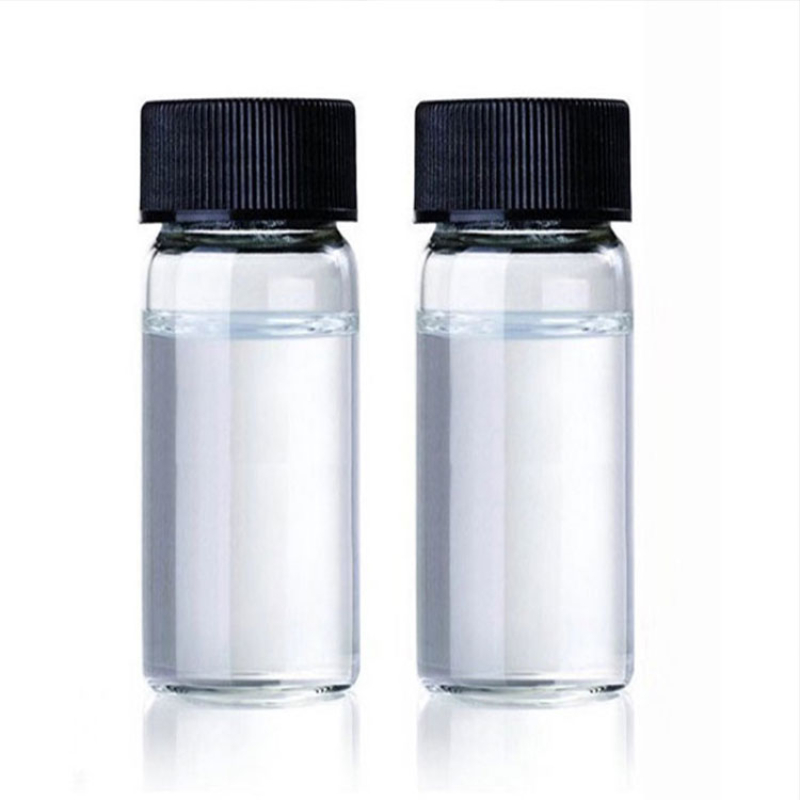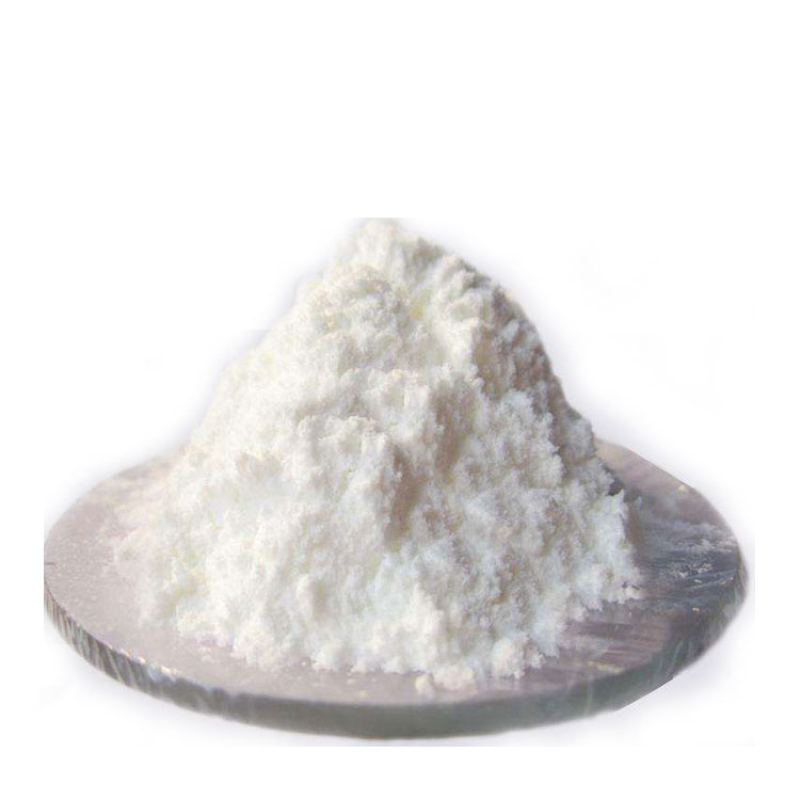Products Description of Isopropyl palmitate CAS#142-91-6Isopropyl palmitate is a traditional, refreshing, fast-spreading emollient used in modern cosmetics. It is used as the main carrier or conditioning ingredient in a wide range of cosmetic applications.
Contact Now
Heptane CAS# 142-82-5N-Heptane is a flammable liquid, current in crude oil and extensively used in the auto- cell industry. For example, as a solvent, as a fuel knock trying out standard, as automobile starter fl uid, and paraffi nic naphtha. n-Heptane motives unfavourable fitness results in occupational workers, such as CNS depression, skin irritation, and pain.
Contact Now
Products Description of Tetrahydropyran CAS#142-68-7Tetrahydropyran, also known as oxadiazine, is a six-membered oxygen-containing saturated heterocyclic ring. It is a colorless, flammable liquid at room temperature with a special smell. It is miscible in water, ethanol, ether, and other organic solvents. It generates explosive organic peroxides under light. It is prepared by hydrogenation of dihydropyran in the presence of Raney nickel or reaction of 5-dibromopentane and water in the presence of zinc oxide.
Contact Now
Products Description of Pyridine hydrobromide CAS#18820-82-1Pyridine hydrobromide is used as an intermediate for cephalosporin antibiotics such as ceftriaxone, cefapirin, and ceftazidime.Pyridine hydrobromide Chemical PropertiesMelting point 200 °C (dec.)(lit.)storage temp. Inert atmosphere,Room Temperatureform powder to crystalcolor White to Light yellow to Light orangeWater Solubility Soluble in water.Sensitive HygroscopicBRN 3615336InChIInChI=1S/C5H5N.BrH/c1-2-4-6-5-3-1;/h1-5H;1HInChIKeyBBFCIBZLAVOLCF-UHFFFAOYSA-NSMILESC1C=CN=CC=1.BrCAS DataBase
Contact Now
Products Description of Isopropyl Palmitate CAS#142-91-6Isopropyl palmitate is a traditional, refreshing, fast-spreading emollient used in modern cosmetics. Used as primary carrier or conditioning ingredient in a wide range of cosmetic applications.
Contact Now
Products Description of Gadoteric acid CAS#72573-82-1White powderGadoteric acid Chemical PropertiesMelting point >300°Cstorage temp. Refrigeratorsolubility Water (Slightly)form Solidcolor White to Off-White Factory and Equipment ShowFast delivery timeInventory 2-3 working days New production 7-10 working days
Contact Now
Products Description of Chromium(VI) oxide CAS#1333-82-0Chromium trioxide is an inorganic compound with the chemical formula CrO3. It is a dark red or dark purple crystalline powder. It is soluble in water, sulfuric acid, nitric acid, ethanol, ether, acetic acid, and acetone. It is mainly used in electroplating industry, pharmaceutical industry, printing industry, tanning and fabric mordant dyeing.On October 27, 2017, the World Health Organization's International Agency for Research on Cancer published a preliminary list of carcinogens for reference.
Contact Now
Products Description of Magnesium carbonate hydroxide CAS#39409-82-0This product is white monoclinic crystal with a relative density of 2.254. It is slightly soluble in water and easily soluble in dilute acid. It will foam and decompose in acid to release carbon dioxide. It will generate magnesium oxide and carbon dioxide when heated and calcined.Magnesium carbonate hydroxide Chemical Propertiesdensity 2.16RTECS FG1797000storage temp. 2-8°Cform Solidcolor WhiteOdorat 100.00?%. odorlessWater Solubility Soluble in water.
Contact Now
Products Description of Disodium sulfide CAS#1313-82-2Sodium sulfide, also known as stinky alkali, stinky soda, or sulfide alkali, is an inorganic compound with the chemical formula Na2S.
Contact Now
Products Description of Bis(2-ethylhexyl) maleate CAS#142-16-5Diethylhexyl maleate, also known as diisooctyl maleate, is a chemical with the molecular formula C20H36O4.Bis(2-ethylhexyl) maleate Chemical PropertiesMelting point -50°CBoiling point 208-209°C 10mmdensity 0.944 g/mL at 25 °C(lit.)vapor pressure 0Pa at 20℃refractive index n20/D 1.455(lit.)Fp >230 °Fstorage temp. Sealed in dry,Room Temperaturesolubility Chloroform (Sparingly), Ethyl Acetate(Slightly),Methanol (Slightly)form Liquidcolor ColourlessWater
Contact Now
Products Description of Sodium Sulfide CAS#1313-82-2 Sodium sulfide is also known as alkali sulfide, stinking soda, and stinking alkali. The pure product is colorless or slightly purple prismatic crystals at room temperature. Industrial sodium sulfide is often pink, brownish red, or khaki blocks due to impurities. It has the smell of rotten eggs, is corrosive, and toxic. The density is 2.427. It decomposes at 920°C. It is soluble in cold water and easily soluble in hot water.
Contact Now
Cyclohexane CAS# 110-82-7Cyclohexane is a normal alicyclic hydrocarbon, which is a ring shape composed of six carbon atoms, every of which is linked to two hydrogen atoms. It has two most important conformations: chair and boat, of which the chair conformation is the most stable. It is a colorless liquid with a pungent smell at room temperature and pressure. It is insoluble in water, however miscible with most natural solvents such as ethanol, ether, benzene, and acetone.
Contact Now
Products Description of METHYL LAURATE CAS#111-82-0Obtained by esterification of lauric acid and methanol. Heat the mixture of lauric acid, anhydrous methanol and concentrated sulfuric acid to reflux for 18 hours, pour the reaction into water, and separate the ester layer. Wash with water, saturated sodium bicarbonate solution and water in turn.
Contact Now
Products Description of Lithium Bromide hydrate CAS#85017-82-9Lithium bromide is a highly efficient water vapor absorbent and air humidity regulator. Lithium bromide with a concentration of 54%-55% is used as an absorption refrigerant. In organic chemistry, it is used as a hydrogen chloride remover and an organic fiber (such as wool, hair, etc.) expansion agent. In medicine, it is used as a hypnotic and sedative.
Contact Now
Products Description of Sulfide Sodium CAS#1313-82-2When sodium polysulfide impurities are present, the sodium sulfide will show different degrees of color changes due to the influence of factors such as the length of the sulfur chain in the sodium polysulfide. Common colors include pink, brownish red, and khaki blocks.
Contact Now
Products Description of Sodium sulfate CAS#7757-82-6Sodium sulfate is an important chemical raw material and the main raw material for producing chemical products such as sodium sulfide and sodium silicate. Sodium sulfate is also called glauber's salt, anhydrous sodium sulfate, and anhydrous sodium sulfate. White monoclinic crystals are fine crystals or powders. Relative density is 2.68, melting point is 884℃. Soluble in water, and the aqueous solution is neutral. Soluble in glycerol, insoluble in ethanol, exposed to air, it easily absorbs water to become hydrated sodium sulfate.
Contact Now
Sodium Sulfide CAS#1313-82-2Product Description: Sodium sulfide is the chemical compound with the system Na₂S, or greater many times its hydrate Na₂S·9H₂O. Both are colorless water-soluble salts that supply strongly alkaline solutions. When uncovered to moist air, Na₂S and its hydrates emit hydrogen sulfide, which smells like rotten eggs. Sodium sulfide, anhydrous is a yellow to brick pink crystalline mass or fused solid. If uncovered to moist air, it absorbs moisture from the air, and it is in charge to spontaneous heating and might also motive ignition of close by flamable material.
Contact Now
Products Description of Kavain CAS#3155-48-4White crystalline powder, soluble in organic solvents such as methanol, ethanol, DMSO, etc., derived from Kava pepper.Kavain Chemical PropertiesMelting point 142-148 °CBoiling point 432.6±45.0 °C(Predicted)density 1.15±0.1 g/cm3(Predicted)storage temp. Amber Vial, -20°C Freezer, Under inert atmospheresolubility Chloroform (Slightly), Ethyl Acetate (Slightly)color Off-White to Pale YellowBRN 177877Stability:Light and Moisture SensitiveInChIInChI=1S/C14H14O3/c1-16-13-9-12(17-14(15)10-13)8-7-11-5-3-2-4-6-11/h
Contact Now
Products Description of 1-Dodecanethiol CAS#112-55-0Colorless or light yellow liquid. Melting point -7℃, boiling point 165-169℃ (5.19kPa), 142-145℃ (2kPa), relative density 0.8450 (20/20℃), refractive index 1.4589, flash point 87℃.
Contact Now
Products Description of 2-chlorobenzoic acid CAS#118-91-22-Chlorobenzoic acid, almost white coarse powder. The melting point is 142℃, and the density (20℃) is 1.5449/m3.
Contact Now
Products Description of p-Menthane-3,8-diol CAS#42822-86-6Menthanediol, also known as p-menthane-3,8-diol, abbreviated as PMD, has been included in the National Cosmetic Raw Materials Catalogue (2016) and the GB2760 Food Additives Catalogue, and can be used as a cooling agent in cosmetics and food.p-Menthane-3,8-diol Chemical PropertiesMelting point 82-83 °CBoiling point 267.6±8.0 °C(Predicted)density 1.009±0.06 g/cm3(Predicted)FEMA 4053 | P-MENTHANE-3,8-DIOLstorage temp. Sealed in dry,Room Temperaturesolubility Chloroform (Slightly), Methanol (Slightly)form&
Contact Now
Products Description of CETEARYL ALCOHOL CAS#8005-44-5Cetostearyl alcohol is in the form of white granules, flakes or blocks, has a greasy smell, and is a transparent oily liquid after melting.
Contact Now
Products Description of Mineral oil CAS#8042-47-5 is a highly refined petroleum distillate that is colorless to pale yellow in appearance, with a clear and viscous texture. It is essentially odorless, with a specific gravity ranging from 0.79 to 0.94 at 15.6 °C, and a boiling point that varies widely, typically between 150–894 °C. Mineral oil has a low vapor pressure, which is less than 0.1 kPa at 20 °C, and a flash point of 168.33 °C.
Contact Now
Products Description of CARAMEL CAS#8028-89-5Caramel color is one of the food colorings with the longest history of human use. It is also the most widely used and popular food additive currently used by people. It has high color rate and strong coloring ability, reflecting the unique reddish brown color of fermented soy sauce, which is ruddy and bright. It has moderate viscosity, good solubility, high salt tolerance and stable quality.CARAMEL Chemical Propertiesdensity 1.35 g/cm3FEMA 2235 | CARAMEL COLOROdorat 100.00 %.
Contact Now


































